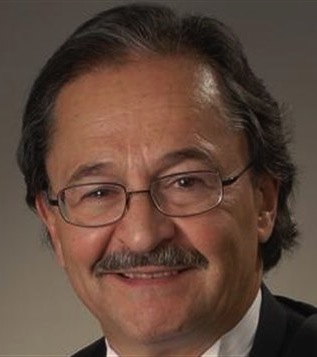What appears to be the first confirmed example of methodical and systematic queue jumping uncovered by Alberta’s Health Care Preferential Treatment Inquiry emerged this week and, lo and behold, it involved the operations of a private medical clinic.
This should not surprise us. After all, in a fair and well-run public health care system, what else do these private, for-profit clinics that are cropping up throughout Western Canada have to offer for the thousands of dollars in annual fees they charge patients other than insider connections and the promise of preferential treatment?
Still, the story of how patients — or perhaps we should say customers — of the exclusive Helios Wellness Centre in Calgary got enhanced and accelerated access to colonoscopy tests at a publicly run cancer screening clinic is an intriguing one, and we can only hope the inquiry led by former justice John Vertes will see fit to probe, as it were, a little deeper.
Testimony to the inquiry earlier this week outlined how non-urgent patients referred by Helios to Calgary’s Forzani and MacPhail Colon Cancer Screening Centre were fast-tracked for tests after waits of about three weeks, while other patients had to wait up to three years for non-urgent tests.
A former clerk from the Forzani and MacPhail clinic, run by Alberta Health Services and the University of Calgary Faculty of Medicine out of Calgary’s Foothills Hospital, testified that her bosses ordered her to move patients from Helios — located in the same building — to the head of the public line.
Referrals from Helios were booked as urgent, testified the former clerk, Samantha Mallyon. “It was just common practice with the Helios patients to make sure they were a priority,” Mallyon explained. Helios paperwork even had its own special tray.
Other clerks offered similar testimony, and told of being discouraged from making a big deal of the way things were run.
In response, a Forzani clinic manager opted for the tried and true managerial defence and accused the staff of going rogue — a suggestion Vertes seemed to find quite fanciful.
Be that as it may, over the past few years a slew of private clinics have opened in this part of the country, taking healthy amounts of cash up front from what one witness at the hearing termed well-heeled “executive patients” for a range of personal care services plus health care treatments that the clinics can bill back to the public health insurance system.
The additional fees these clinics charge, generally, are for non-medical services such as such as diet advice, fitness coaching, genetic testing, chiropractic treatments, acupuncture, cosmetic procedures or whatever their operators wish to provide — up to and including tarot card readings, presumably.
Naturally, they offer a nicer ambience than the average doctor’s office or walk-in clinic, and some of them, no doubt, even have free Starbucks coffee in real china cups.
A recent advertorial misleadingly published as if it were legitimate news by the Edmonton Journal for the Copeman Clinic, a controversial example of this type of enterprise, tried to take advantage of criticism of its business model by misrepresenting the arguments of critics of two-tier health care as being only about the clinic’s décor and ambience — using that as a setup to brag about the clinic’s décor and ambience.
The true substance of the criticism of this approach is that in return for the steep up-front service fee, clinic doctors are able to use the public health insurance system to subsidize enhanced access for those with the ability to pay extra — which opponents of these clinics argue is a violation of the Canada Health Act.
To be covered by medicare, services covered by public health insurance must be must be billed in exactly the same way as any other physician’s bills, according to the same rules. Those rules certainly include no queue jumping for tests and treatments.
Regardless, the clear implication of the clinics’ pitch to potential customers goes far beyond just quick access to a doctor and a nice chair to sit in while you’re waiting. Never stated explicitly, but as clear between the lines as a nudge and a couple of winks, is the implication they can get you quicker and better access to insured medical services as well.
Now we can all see, thanks to this week’s line-jumping inquiry testimony, that there may in fact be more than a little truth to this.
Naturally, some of the usual suspects — Alberta Health Minister Fred Horne, for example — say that are shocked by this, and offended as well. But the true test of the level of their concern is yet to come — what they’re prepared to do about it.
In the mean time, Vertes and his inquiry owe the people of Alberta more than just this glimpse behind the usually closed doors where the wheeling and dealing among medical insiders goes on.
We need to know who scratched whose back, and how, to get preferential Helios patients jumped to the head of the line.
From there, we might be able to figure out if it’s happening elsewhere, and what to do about it.
But to get there, inquiry counsel is going to have to smarten up and adopt a less passive and incurious attitude than they have shown up to now.
This post also appears on David Climenhaga’s blog, Alberta Diary.



